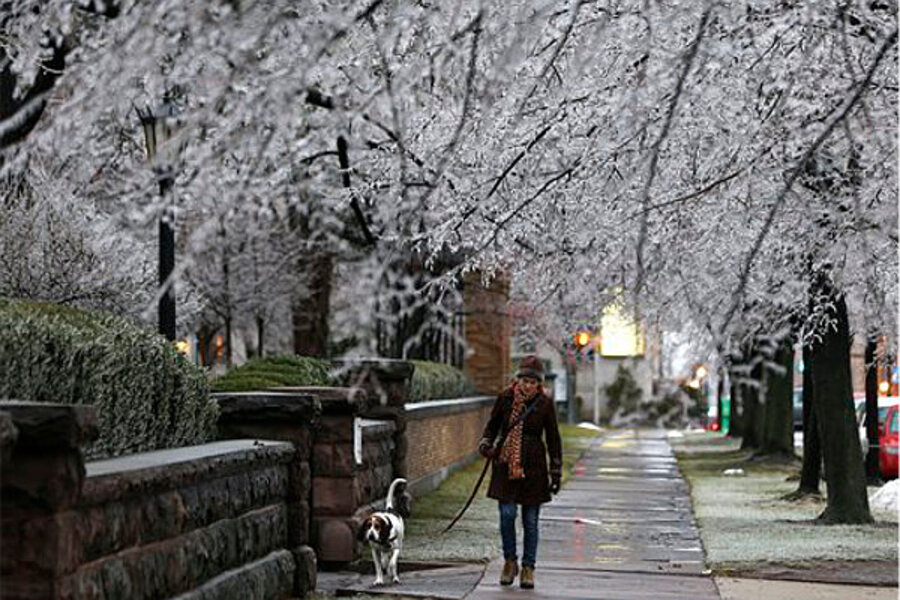Christmas 2013 travel: tornadoes, icy blasts, and snow, oh my!
Loading...
A lumbering winter storm is continuing to snarl Christmas-season travel from Texas to the Great Lakes, and weather forecasters expect a slushfest that could ultimately produce snow across the Midwest, ice storms in New England, and winter tornadoes in the South.
With about 85 million Americans expected to make the trip to grandma’s house by car starting Saturday, the unseasonably warm and wet wall of weather now stretching across the belly of the United States has already begun to delay airplanes, slow interstate traffic, and in general cause “a lot of misery,” Weather Channel lead meteorologist Michael Palmer told NBC News.
Mid-state Oklahoma, where the mercury hovered near freezing, faced being covered in a sheet of ice a half-inch thick as rain began to freeze Friday.
Forecasters say the system could drop as much as four inches of rain in spots. When the system eventually is forced to slip over a dome of cold air dropping out of Canada, some of that rain may turn into snow, perhaps as much as a foot in areas northwest of Chicago.
The National Weather Service has issued flash flood watches through parts of Arkansas, Indiana, Illinois, and Ohio. Some of that moisture could turn into freezing rain and ice by Saturday night, especially as the system creeps up the Appalachian spine, it notes.
“[W]arm, moist air will ride over the top of subfreezing air near the surface of the earth in portions of upstate New York, New Hampshire, northern Vermont, southern and central Maine, and adjacent parts of southeast Canada,” writes the Weather Channel’s Chris Dolce. “There is a risk of significant ice accumulations, which could lead to broken tree limbs, powers outages and dangerous travel, with local ice accumulations over one-half inch possible.”
The southern flank of the storm, meanwhile, has the potential to form tornadoes in Lousiana, Mississippi, Arkansas, and parts of Missouri, places that have alreadly seen 119 December tornadoes. Potential record highs rubbing against an incoming cold front could produce the convective energy needed to form twisters.
Possibly more dangerous are regular wind gusts of up to 80 miles per hour out of the South, which could make driving hazardous for taller vehicles, especially those traveling on east-west highways and interstates.
One area at high risk of seeing 160 m.p.h. tornadoes is Memphis, Tenn., where FedEx has a main national hub. The storm is rolling in just as employees are rushing through final Christmas deliveries.
The good news? Once the storm system moves through, forecasters predict cold but sunny Christmas weather across large parts of the US.








